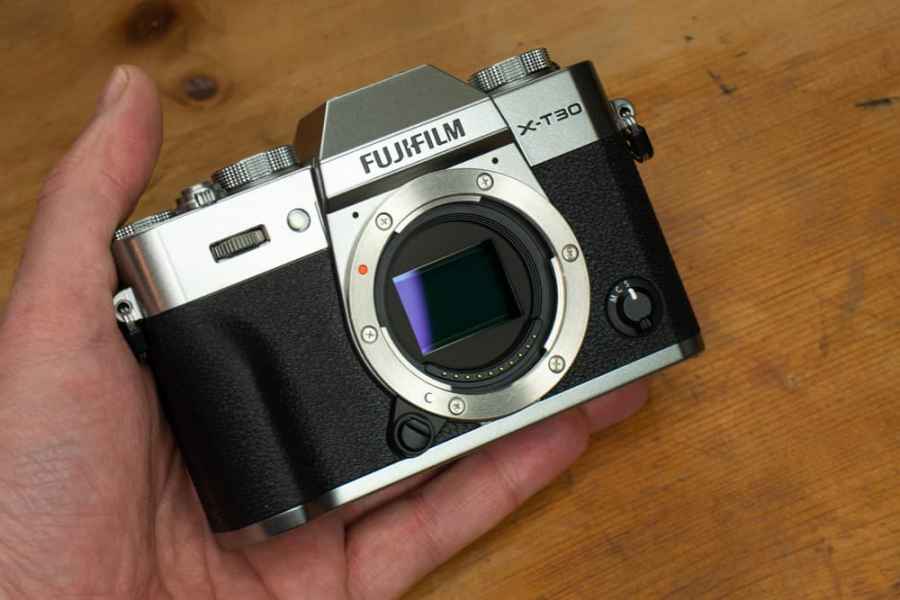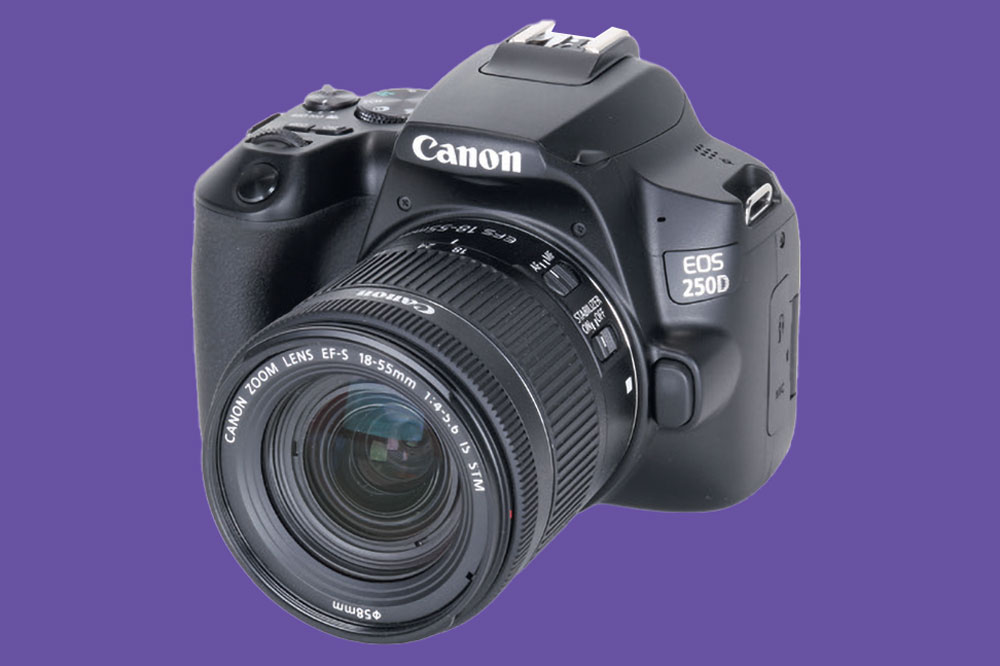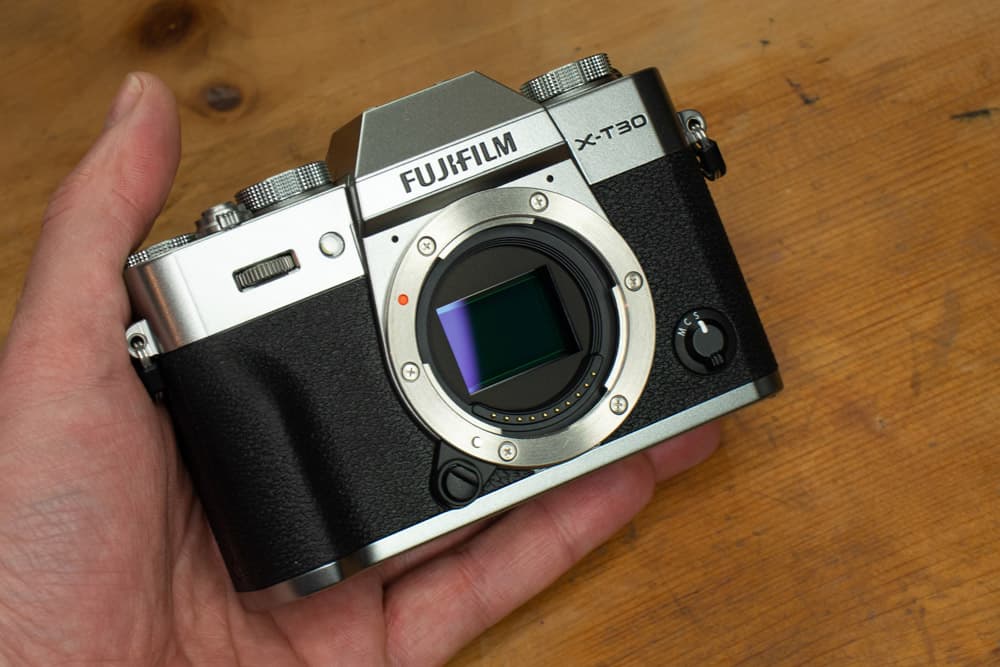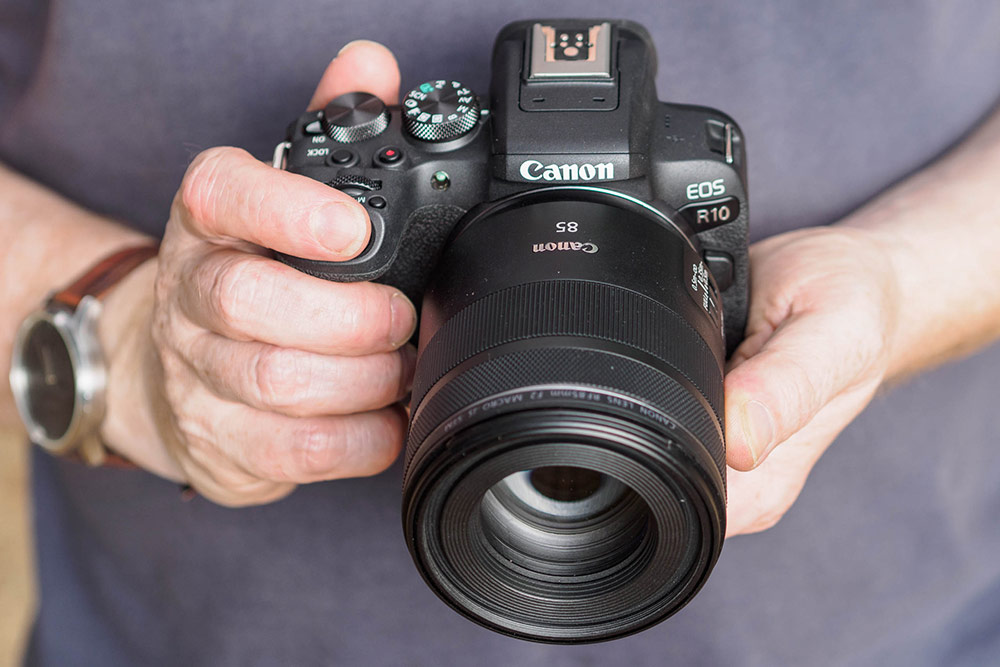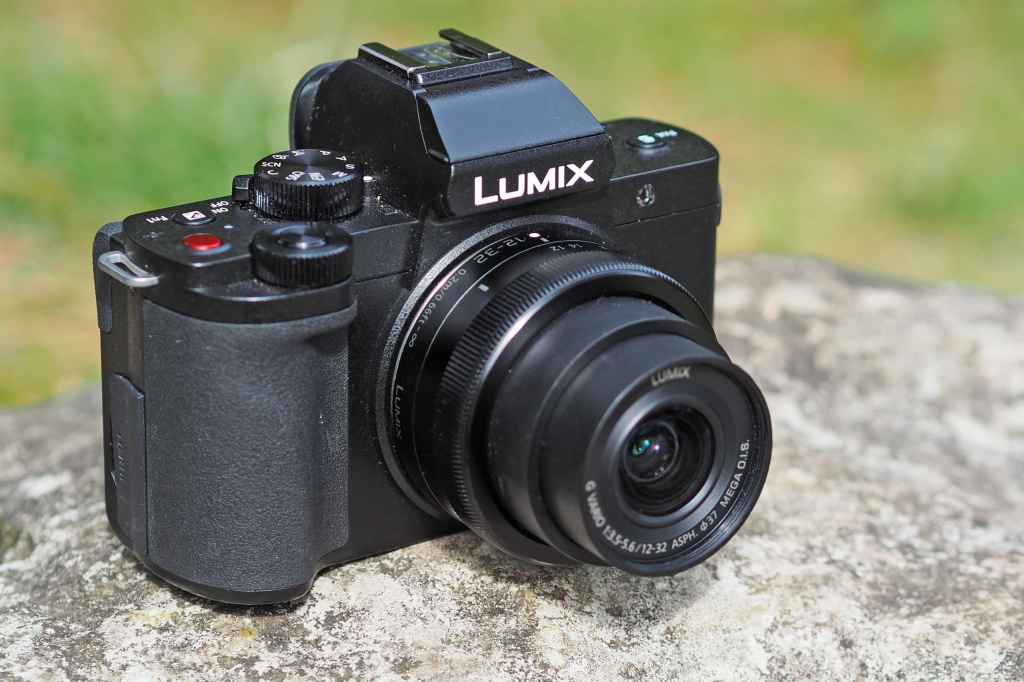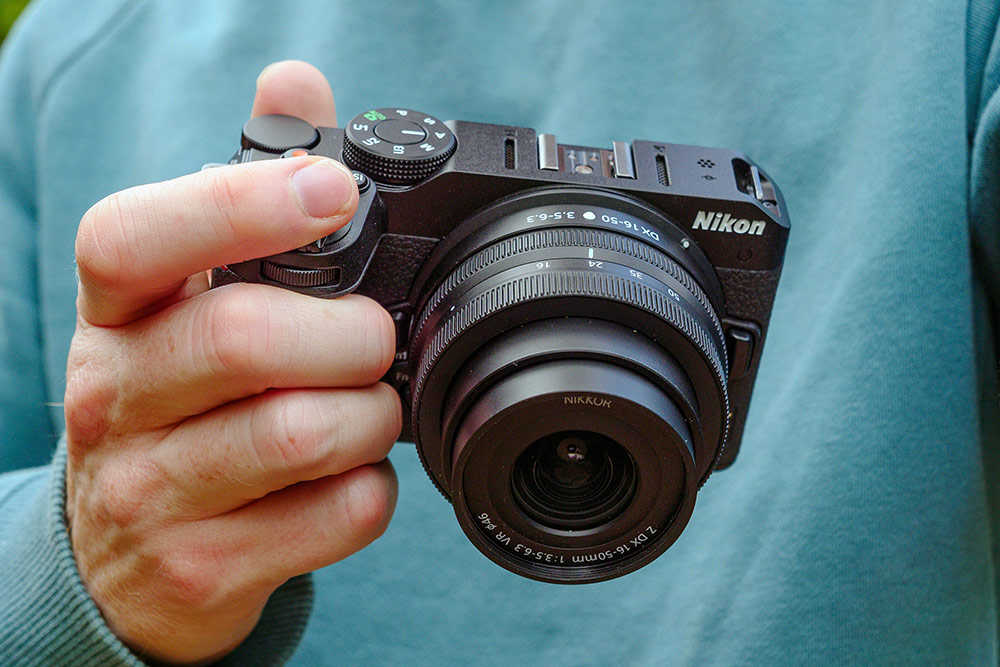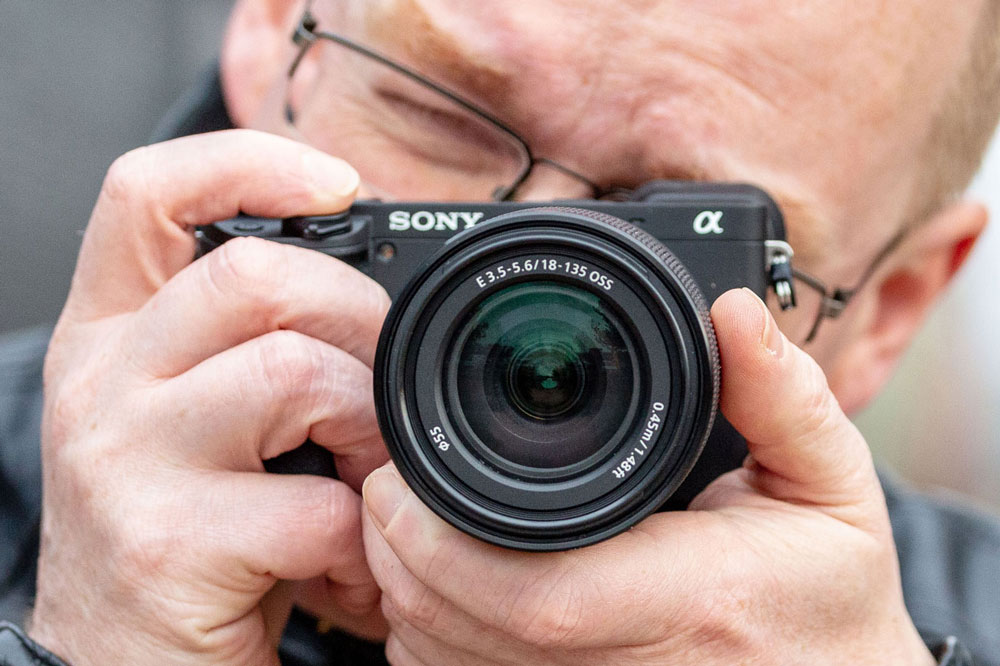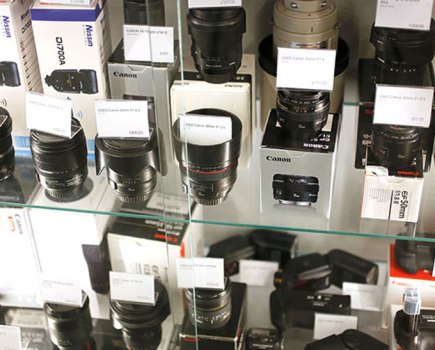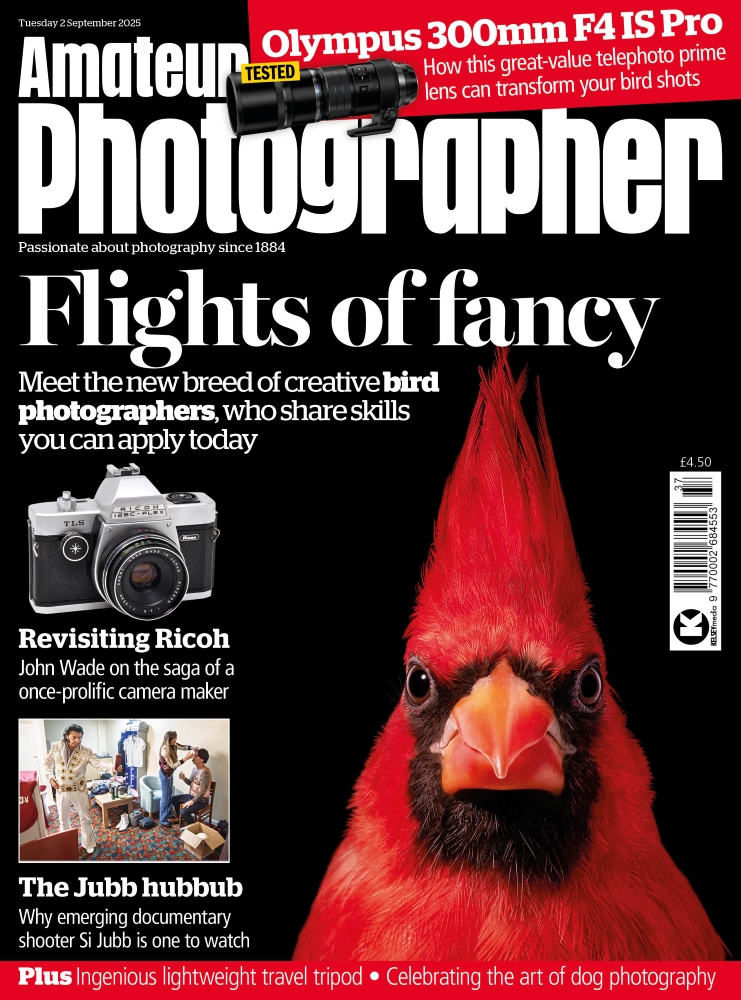If you’re buying a camera for beginners – or your first real camera – there are several key factors to consider. You want something that’s naturally easy to use, even if you have never held a camera before. It should be affordable: the best cameras for photography are becoming synonymous with the latest mirrorless tech, and they deliver a superb performance, but are designed and priced for enthusiasts and professionals. A good beginner’s camera should not break the bank, yet be able to take great pictures – ones that represent a significant step-up in quality from those you get with a smartphone. Here are our favourites.
Value for money
We’ve picked for this guide a selection of cameras that we’ve reviewed and feel are a worthwhile investment for new photographers. There are choices across a range of prices: rather than just picking the cheapest models, we’ve been careful to select cameras we believe are worth the money.
Included are cameras you can buy new, and some older models that are only available second-hand. We’ve focused on interchangeable-lens models as these give new shooters a better platform from which to learn. For a camera with a fixed lens, check out our guide to the best compact cameras.
Mirrorless or DSLR?
Our list is reflective of the current state of the camera market, so you’ll see a lot more mirrorless cameras than DSLRs, as this is simply where all the latest and greatest developments are happening. Some photographers do prefer DSLRs, and you can see our rundown of DSLRs vs mirrorless for the main differences between the types. Also, if you’re unsure about all this technical terminology, scroll to the bottom of this page for a quick rundown of key specs to look out for when buying a beginner’s camera.
Best cameras for beginners: our quick list
- Best camera for beginners overall: Canon EOS R50 – Buy now
- Best camera for beginners on a budget: Olympus OM-D E-M10 Mark III – Buy now
- Best DSLR for beginners: Canon EOS 250D / Rebel SL3 – Buy now
- Best Fujifilm camera for beginners: Fujifilm X-T30 II – Buy now
- Best mirrorless camera for beginners: Canon EOS R10 – Buy now
- Best Micro Four Thirds for beginners: Olympus OM-D E-M10 Mark IV – Buy now
- Best budget vlogging camera for beginners: Panasonic Lumix G100 – Buy now
- Best vlogging camera for beginners: Sony ZV-E10 – Buy now
- Best Nikon camera for beginners: Nikon Z30 – Buy now
- Best Sony camera for beginners: Sony A6400 – Buy now
- Best budget DSLR for beginners: Pentax K-70 – Buy now
Looking for the best deal on beginners’ cameras? Not only will you find the best cameras for novices/rookies, but also some of the best camera deals, as our ‘Buy now’ buttons are setup to automatically take you to the best prices from trusted retailers. There is also a list of other retailers below each camera, so you can find the right deal for you.
We also have guides to the best DSLRs and the best mirrorless cameras if you already know which type you want.
Why you can trust Amateur Photographer
We spend many hours testing every product we recommend, in detail, in a variety of situations and shooting scenarios, and only use experts for our reviews, so you can be sure that you’re getting the best products. Find out more about our expert writers.
Best camera overall for beginners
Canon EOS R50
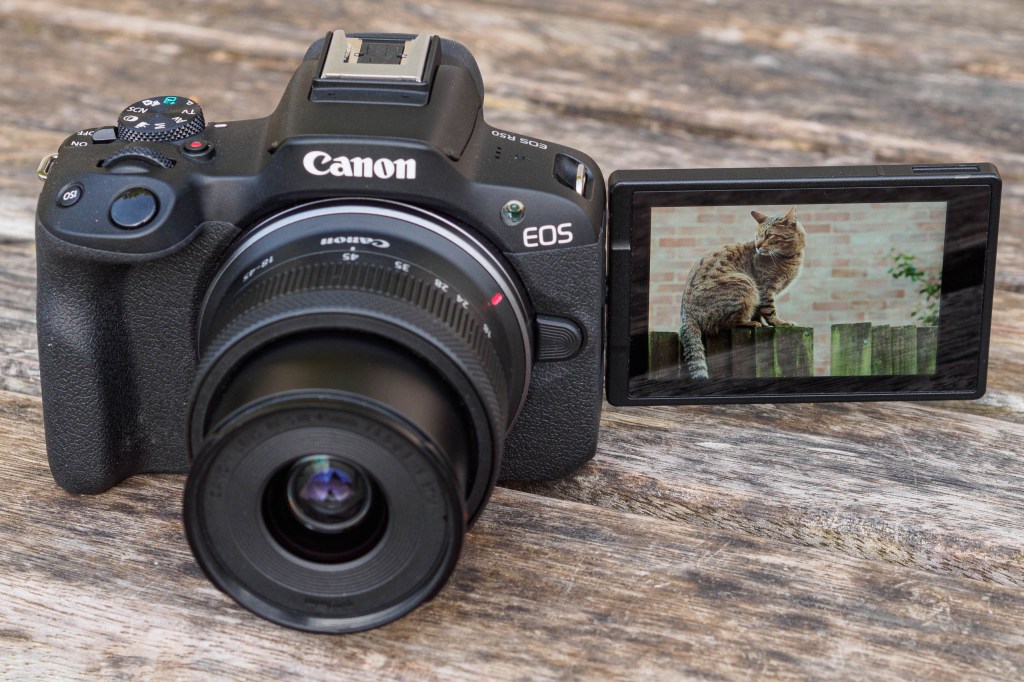
Amateur Photographer verdict
A really good option for budding photographers: small and light, yet comfortable in the hand, with excellent touchscreen interface, it produces consistently fine JPEG files direct from the camera.- Very compact and lightweight
- Extremely capable autofocus
- Rapid continuous shooting for its class
- Limited physical controls
- Small, dim viewfinder
- Very limited RF-S lens range
At a glance:
- Mirrorless camera
- 24.2MP APS-C sensor
- Canon RF/RF-S lenses
- 4K video
- $748 / £649 body only, $749 / £685 with 18-45mm lens
Canon has increased its range of affordable APS-C EOS RF mount mirrorless cameras. The EOS R50 is not the cheapest – that’s the Canon EOS R100 – but it’s the cheapest to use Canon’s most up to date sensor and autofocus technology. We also like the somewhat more advanced EOS R10, but the EOS R50 really hits the sweet spot for beginners, combining features, performance and value. Also, second hand models can be found now, too.
The only issue for new users right now is that Canon has been slow to bring out RF-S lenses for this new format. At the time of writing there is no wide-angle option, though by the time most beginners have reached the limitations of the standard 18-55mm kit lens, that situation may have changed.
For its price, the EOS R50 is designed with appealing features: a very good 24-megapixel sensor, excellent autofocus and terrific burst shooting capabilities for such an entry-level camera.
Read our Canon EOS R50 review
Best budget camera for beginners
Olympus OM-D E-M10 Mark III
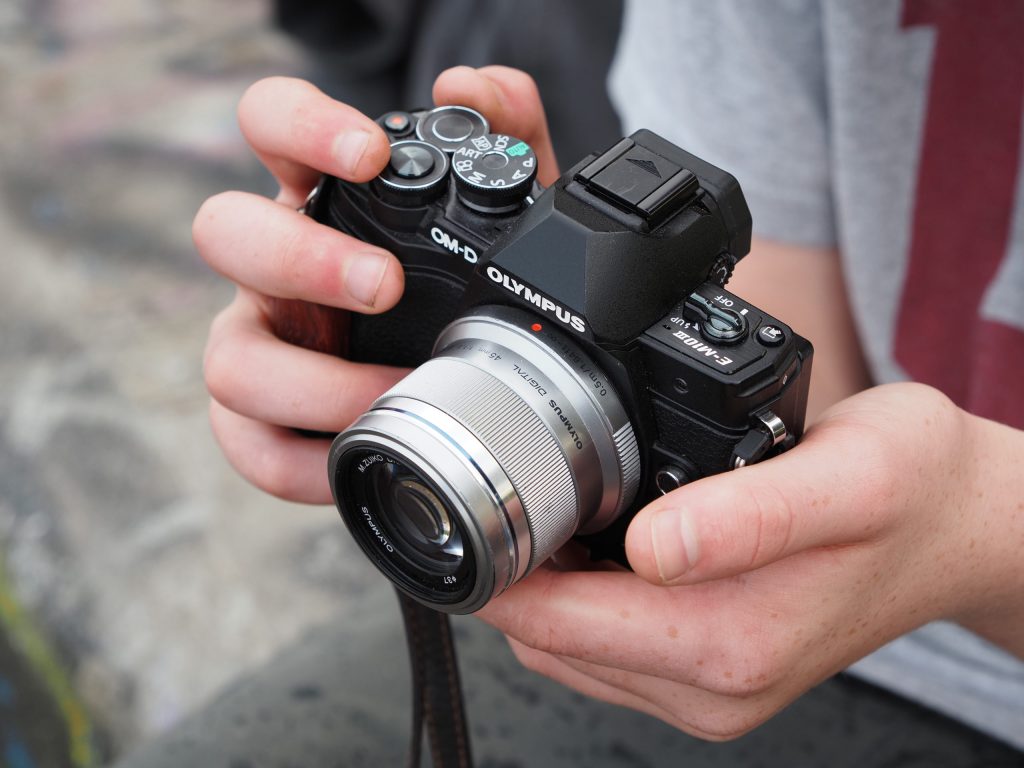
Amateur Photographer verdict
A strong feature set in a compact, attractive body at a very keen price. Access to a good range of relatively affordable, lightweight lenses – and Panasonic lenses – too.- Fantastic value second hand
- Lots of affordable lenses
- Beginner-friendly shooting modes
- Smaller sensor & lower resolution than rivals
- Clunky in-camera RAW conversion
At a glance:
- Mirrorless camera
- 16MP Four Thirds sensor
- Micro Four Thirds lens mount
- 4K video
- From $420 / from £320 used, body-only
The second-hand market holds some real value in quality budget-friendly cameras. Those like the Olympus OM-D E-M10 Mark III, released in 2017, can be found with hundreds shaved off their initial asking price. And guess what? They still take excellent pictures.
The Olympus OM-D E-M10 Mark III isn’t the newest in its line – you’ll meet the Mark IV version a little later in this guide – but it still ticks plenty of boxes for beginning photographers and video shooters.
AP (Advanced Photography) mode
It captures 16MP images, which may sound a little low if you compare it to the latest releases from Sony, but realistically is plenty for most purposes. Images at this resolution will look great on screens, and can be printed to a decent size. The camera is oriented towards beginners, with a control layout and menu system that are intuitive and easy to understand.
Something we particularly liked when we tested the camera in our full review was the AP (Advanced Photography) mode on the dial, which allows the user to easily put useful shooting modes on the touch menu, along with a handy explainer of each one. This is a fantastic way to learn new techniques like double-exposure, HDR, autoexposure bracketing and more.
As you’ll be buying this camera second-hand, you’ll likely be getting it body-only. This means you’ll also need a lens or two to go with it – the E-M10 Mark III uses the Micro Four Thirds lens mount, meaning you have plenty of affordable options. Our guide to the best Micro Four Thirds lenses includes some great cheap optics to get you started.
Read our full Olympus OM-D E-M10 Mark III review.
Find the Olympus OM-D E-M10 Mark III used on MPB
Best DSLR for beginners
Canon EOS 250D / Rebel SL3
Amateur Photographer verdict
A well-featured, easy-to use entry-level DSLR that produces very good overall image quality: vibrant colours and enough detail for large prints. Equipped with decent novice-friendly features, and more- Dependably excellent image quality
- Very light weight
- Broad choice of lenses
- No weatherproofing
- 9-point AF system has aged
At a glance:
- DSLR
- 24.2MP APS-C sensor
- Canon EF/EF-S lenses
- 4K video
- $649 / from £380 body only, $749 / £596 with 18-55mm IS lens
If you feel for the good old clunking shutter of a DSLR, then the Canon EOS 250D is one of the best entry points. Positioned between the entry-level EOS 2000D and mid-range EOS 850D models, the 24.2MP EOS 250D is Canon’s smallest DSLR and comes with some key features not found on the EOS 2000D.
These include Canon’s Dual Pixel AF technology that speeds up focus performance when the camera is in live view, 4K video recording, plus a vari-angle touchscreen LCD display. The intuitive control layout makes it easy to use, while Canon’s guided user interface helps beginners learn the main settings. If you’re considering the 1300D/2000D but have a little more to spend, the 250D is well worth a look.
Read our Canon EOS 250D / Rebel SL3 review.
Best Fujifilm for beginners
Fujifilm X-T30 II
Amateur Photographer verdict
Exceptional image quality and rapid auto-focus for such a compact, portable camera justify the inclusion on this list – despite its price, it is great value.- Gorgeous JPEGs straight from camera
- Satisfying manual controls
- Stylish, high-quality construction
- A little pricey for entry-level
- Annoying Q button placement
Fujifilm X-T30 II at a glance:
- Mirrorless camera
- 26MP APS-C X-Trans CMOS sensor
- Fujifilm X lenses
- 4K video
- $899 / £799 body only
Fujifilm’s X-T30 II updates the popular X-T30. What’s great about the Fujifilm X-T30 II is that it features the same impressive 26MP APS-C X-Trans CMOS sensor that appears in several of Fujifilm’s flagship cameras (until they started sticking 40MP chips in the top models, anyway). This means you get excellent image quality, great noise performance, and for those who like manual controls, there is direct access to camera settings. There’s also 4K video recording, and a range of Fujifilm X-Mount lenses available, it has a metal camera body, and high-speed shooting. All in all, this camera provides terrific scope and potential.
Read our Fujifilm X-T30 II review.
Best mirrorless camera for beginners
Canon EOS R10
Amateur Photographer verdict
True to form for a Canon, this handles nicely and delivers attractive images. Its autofocus system and continuous shooting speed are of a different class to anything previous in its price range.- Lightweight, with great controls
- Fantastic upgrade path
- Can take EF/EF-S lenses with mount adapter
- Limited native RF-S lens range
- Viewfinder a little small
- Lacks in-body image stabilisation
At a glance:
- Mirrorless camera
- 24.2MP APS-C sensor
- Canon RF/RF-S lenses
- 4K video
- $879 / £999 body only. $999 / £1,099 with 18-45mm lens
To help people jump into its fast-growing EOS R line of mirrorless cameras, Canon has introduced several smaller, more affordable models into the line. While the EOS R10 is on the expensive side for a beginner’s camera (and you’ll find plenty of more affordable options further down this list), it’s an excellent investment for anyone who wants to dive seriously into image-making.
It has an APS-C sensor, which is smaller than the full-frame sensor of the bigger EOS R cameras, but it uses the same lens mount. This means you can take advantage of all the excellent Canon RF lenses that it is currently pouring its R&D budget into – the range is small right now, but we expect it to grow with time (which is not something we can say for the DSLR EF lenses, or for the poor, sad EF-M mirrorless range).
In our review, we praised the EOS R10 for its satisfying handling and reliably excellent image quality. We just have to hope that Canon has learned its lesson from the ill-fated EOS M series, and keeps introducing native RF-S lenses to suit this camera’s smaller sensor.
Read our Canon EOS R10 review.
<strong>Best Micro Four Thirds camera for beginners</strong>
Olympus OM-D E-M10 Mark IV
Amateur Photographer verdict
Attractive design and most pleasant to use. Twin-dial design gives scope to take more control. Access to small, affordable lenses its IBIS works well with- Bright, punchy images full of character
- Small and enjoyable to use
- Has advanced features too
- No mic socket for video
- Smaller sensor impacts raw image quality
At a glance:
- Mirrorless camera
- 20MP Four Thirds sensor
- Micro Four Thirds lenses
- 4K video recording
- $700 / £649 body only
Based around a 20MP sensor, the Olympus OM-D E-M10 Mark IV mirrorless camera offers excellent JPEG image quality with extremely attractive colours. The design is stylish and the ergonomics are well laid-out, while extremely effective in-body stabilisation keeps pictures sharp. You also get a good set of useful advanced features and the camera is supported by a fine set of small, affordable Micro Four Thirds lenses. You’ll also find the camera offers Wi-Fi and Bluetooth connectivity, as well as 4K video recording. With In-Body Image Stabilisation, it offers great value for money.
Read our Olympus OM-D E-M10 Mark IV review.
<strong>Best budget vlogging camera for beginners</strong>
Panasonic Lumix G100
Amateur Photographer verdict
A competent camera and great entry-point to the Micro Fours Thirds system. Good to shoot both photos and video: less so to specialise in one of these over the other, however.- Impressive audio + vlogging features
- Comfortable grip for small body
- Impressive EVF
- Price has dropped
- Heavy Crop in 4K with electronic stabilisation
- 10min record time when shooting 4K
At a glance:
- Mirrorless camera
- 20MP MFT sensor
- Micro Four Thirds lenses
- 4K video
- from $680 / from £620 used with 12-32mm lens
The Panasonic Lumix G100 is sometimes overlooked as a beginners camera, but it has a lot to offer. It’s very compact, but still packs in an electronic viewfinder and a vari-angle rear screen, and it uses the Micro Four Thirds lens mount, which means there is a wide lens choice from Panasonic, Olympus and independent makers.
It’s designed very much with vlogging in mind, with an advanced in-camera audio system, though most vloggers will probably swap to an external microphone at some point. The G100 does have a couple of limitations, however, including no in-body stabilisation and a 10-minute recording limit when filming in 4K
Having said that, its design and lens choice make it a terrific camera for stills photography too, and at today’s prices the Lumix G100 delivers an awful lot of camera for the money, especially beginners interested in hybrid content creation. It’s also undergone something of a price slash recently, and can currently be picked up with a lens very reasonably.
Read our Panasonic Lumix G100 review
<strong>Best overall vlogging camera for beginners</strong>
Sony ZV-E10
Amateur Photographer verdict
With its extensive feature set, great autofocus and an 11fps shooting rate, this punches above its light weight. Plenty of creative scope for content creators; photographers too with a decent lens.- Great value entry point to Sony’s E-mount system
- Excellent features for vloggers and casual video users
- Terrific autofocus for its price
- Fully articulated 3inch touchscreen
- Basic button control for photography use
- Older, lower capacity NP-FW50 Battery
- No electronic viewfinder
At a glance:
- Mirrorless camera
- 24MP APS-C sensor
- Sony E lens mount
- 4K video
- $698 / £549 body only
The Sony ZV-E10 was the second of Sony’s ZV-series ‘vlogging’ cameras. It can be used for stills photography too, but the lack of a viewfinder and limited external controls could hold you back. It also uses technologies from Sony’s older A6000-series cameras, so while its autofocus system is right up to date, the sensor is a little prone to ‘rolling shutter’ effects.
There are two very appealing things about the ZV-E10 for beginners, however. One is that there is a wide range of E-mount lenses for this camera, including lenses designed specifically for its APS-C sensor format. The ZV-E10 has a clear advantage over its Canon and Nikon mirrorless rivals in this respect. The other advantage is the price, as this is the cheapest route into Sony’s E-mount camera system.
Other features included a full-articulating rear screen and a clip on wind shield to reduce buffeting in outdoor shots. It’s usually sold with a very compact 16-50mm power zoom kit lens which, while not the best optically, is perfect for newbie filmmakers.
Read our Sony ZV-E10 review
Best Nikon for beginners
Nikon Z30
Amateur Photographer verdict
Aimed at vloggers, this has lovely image quality at a good price. The flip touch screen, wide-area continuous AF, and tally lamp, make for a good shooting experience.- Comfortable grip
- Vari-angle touch screen works a treat
- USB-C connectivity
- Good value
- No headphone jack
- No viewfinder
- No in-body stabilisation
At a glance:
- Mirrorless camera
- 20MP APS-C sensor
- Nikon Z lens mount
- 4K video
- $557 / £699
The Nikon Z30 is the cheapest Nikon Z camera so far. The lack of an electronic viewfinder deters many photographers, but it does have a fully-articulating rear screen, and anyone upgrading from a smartphone will be used to no viewfinder anyway. The Z30’s design certainly doesn’t rule it out for stills photography, but it is clearly designed with vloggers and content creators in mind.
Like Canon, Nikon has little bit slow to bring out lenses for its new APS-C mirrorless format, but has made great strides recently, notably with the release of a new 12-28mm power-zoom lens, a wide-angle zoom that offers an equivalent 18-36mm zoom range. This, and the power zoom lever, make it a great lens for vlogging.
There’s no image stabilisation built in, but many of Nikon’s Z DX lenses are equipped with VR, and you can use electronic stabilisation for video. The features are what we would expect from a mirrorless camera at this price, but the Z30’s build quality is impressive. It’s an affordable route into vlogging with the Nikon Z system, and a nice camera to use.
Read our Nikon Z30 review
Best Sony for beginners
Sony A6400
Amateur Photographer verdict
At once challenging and rewarding for a first camera. Wonderful images and great to learn with for those who can handle it.- Astonishing subject-tracking autofocus
- Excellent image quality in almost any shooting situation
- High level of customisable control
- Compact size
- Decent build quality
- Outdated body design less nice to use than rivals
- No in-body image stabilisation
- 16:9 LCD screen gives small display area for 3:2 stills
At a glance:
- Mirrorless camera
- 24MP APS-C sensor
- Sony E lens mount
- 4K video
- $748 / £749
The Sony A6400 has been around for some time and as the original A6000 has become unavailable, it’s more or less become the ‘base’ model. It’s a good camera for beginners who want to get serious about both photography and video, though if video is your main interest, the ZV-E10 is both more up to date and a good deal cheaper.
For beginner photographers, though, the Sony A6400 has a lot to offer. It has a compact, well-made body with a built in electronic viewfinder and features, and controls that will satisfy many enthusiasts too. Like the ZV-E10, it has access to a wide range of APS-C Sony E-mount lenses, and you can also fit full frame Sony FE lenses, though these are likely to prove quite heavy and cumbersome on the A6400’s compact body.
Image quality is excellent, as is the A6400’s autofocus system. It might be one of Sony’s older models, but you wouldn’t know it. The A6400 does hold its price well, though, so it’s no cheap option. It’s also not without its flaws, including a rather small rear screen and indifferent handling.
Read our Sony A6400 review
<strong>Best budget DSLR for beginners</strong>
Pentax K-70
Amateur Photographer verdict
Large viewfinder and twin control dials make this pleasant and versatile to shoot with. Its in-body stabilisation system works well with all of the vast array of lenses that can be used with it.- Gorgeous, bright viewfinder
- Effective stabilisation
- Tactile handling experience
- LCD screen not touch-sensitive
- Autofocus struggles with moving subjects
At a glance:
- DSLR
- 24MP APS-C CMOS sensor
- Pentax K-mount lenses
- Full HD video
- around $500 / £365 body only, used
Pentax has gained a deserved reputation for producing cameras that provide great value for money, and the entry-level K-70 DSLR is no exception. Built around a 24.2MP APS-C CMOS sensor, notable highlights are a large, bright pentaprism viewfinder with 100% coverage, full weather sealing and an in-body image-stabilisation system – none of which you’ll find on the K-70’s direct rivals from Nikon and Canon. Other features include ISO sensitivity of ISO 100-102,400 and 6fps continuous shooting. For the price, it’s easy to recommend.
Read our Pentax K-70 review.
How to choose the best camera for beginners
A good beginner’s camera should offer a degree of manual control, so that you can learn how the different settings affect a final image. It’s important to think about sensor size as well; in this guide, we’ve dealt with APS-C and Micro Four Thirds, as these generally suit beginners. APS-C sensors are larger, which improves image quality, but they also require larger, pricier bodies to house.
Video features are also something you may want to look at. Do you want the option to shoot 4K video? Then there’s also the autofocus system the camera uses, as well as its maximum burst speed (measured in frames per second). Both of these are important if you want to shoot fast action or wildlife. If, however, you prefer to shoot landscapes or portraits, you may want to prioritise sensor resolution, measured in megapixels.
How we test cameras
We test cameras by taking photographs and video in a wide range of real-world situations. We evaluate their control layouts, handling, and the usability of their viewfinders and screens. We assess their autofocus across a range of different subjects and shooting scenarios and test a camera’s continuous shooting capacity.
We also examine the effectiveness of image stabilisation systems. Last but not least, we critically evaluate the image quality in both JPEG and raw, including resolution, high-ISO noise, and dynamic range. For our final conclusion and score, we take all these factors into account, along with portability and lens systems. You’ll find the full breakdown of how each camera has performed in our full reviews.
If this is your first camera, and you’re still unsure which camera is right for you, have a read of our guide to different camera types.
Once you’ve chosen your camera from these options, you may want to look at some of the accessories that can help you get the most out of your kit, so make sure you have a look at the Top 10 Essential Camera Accessories for beginners.
Have a look at more buying guides here!

